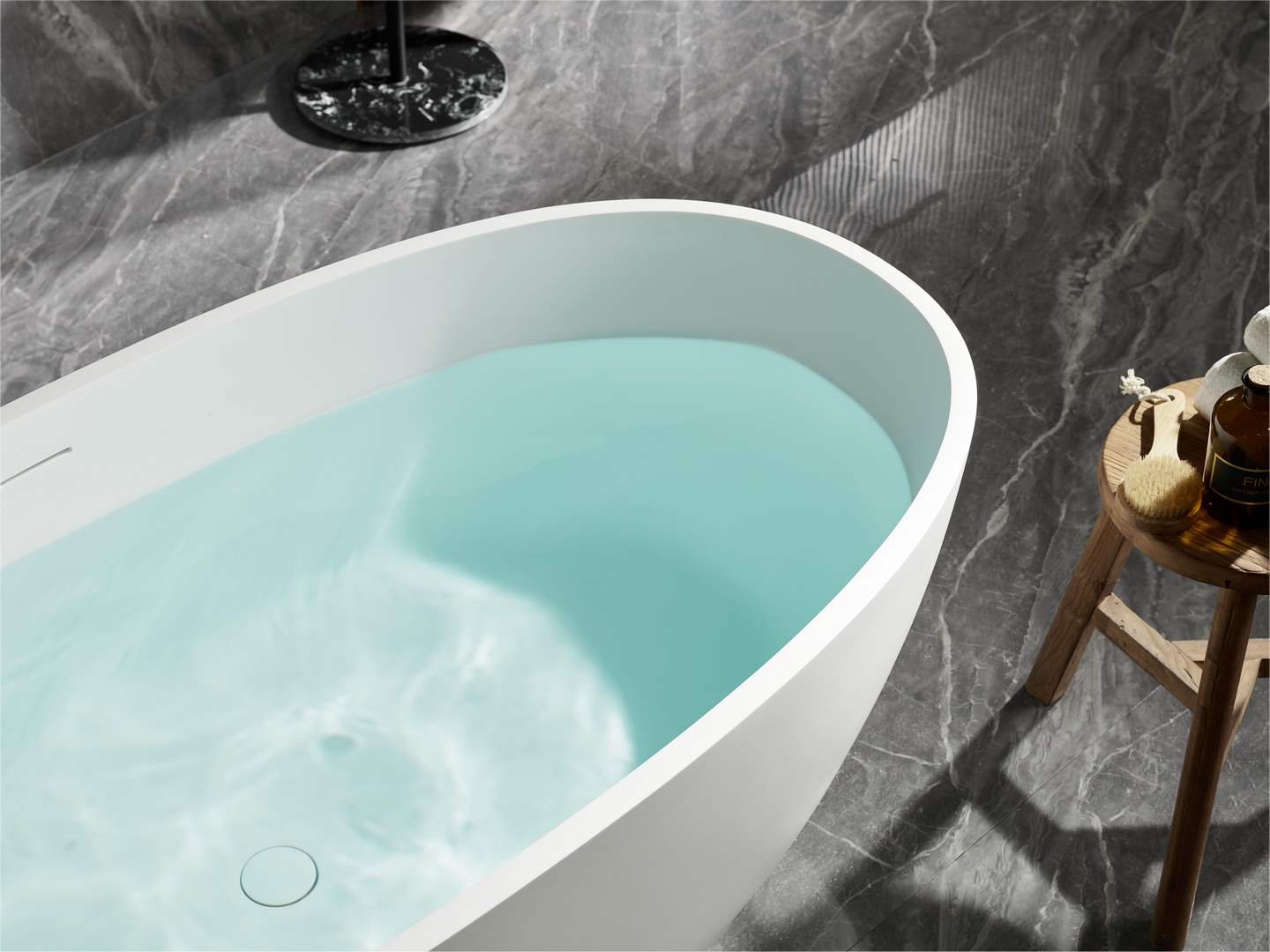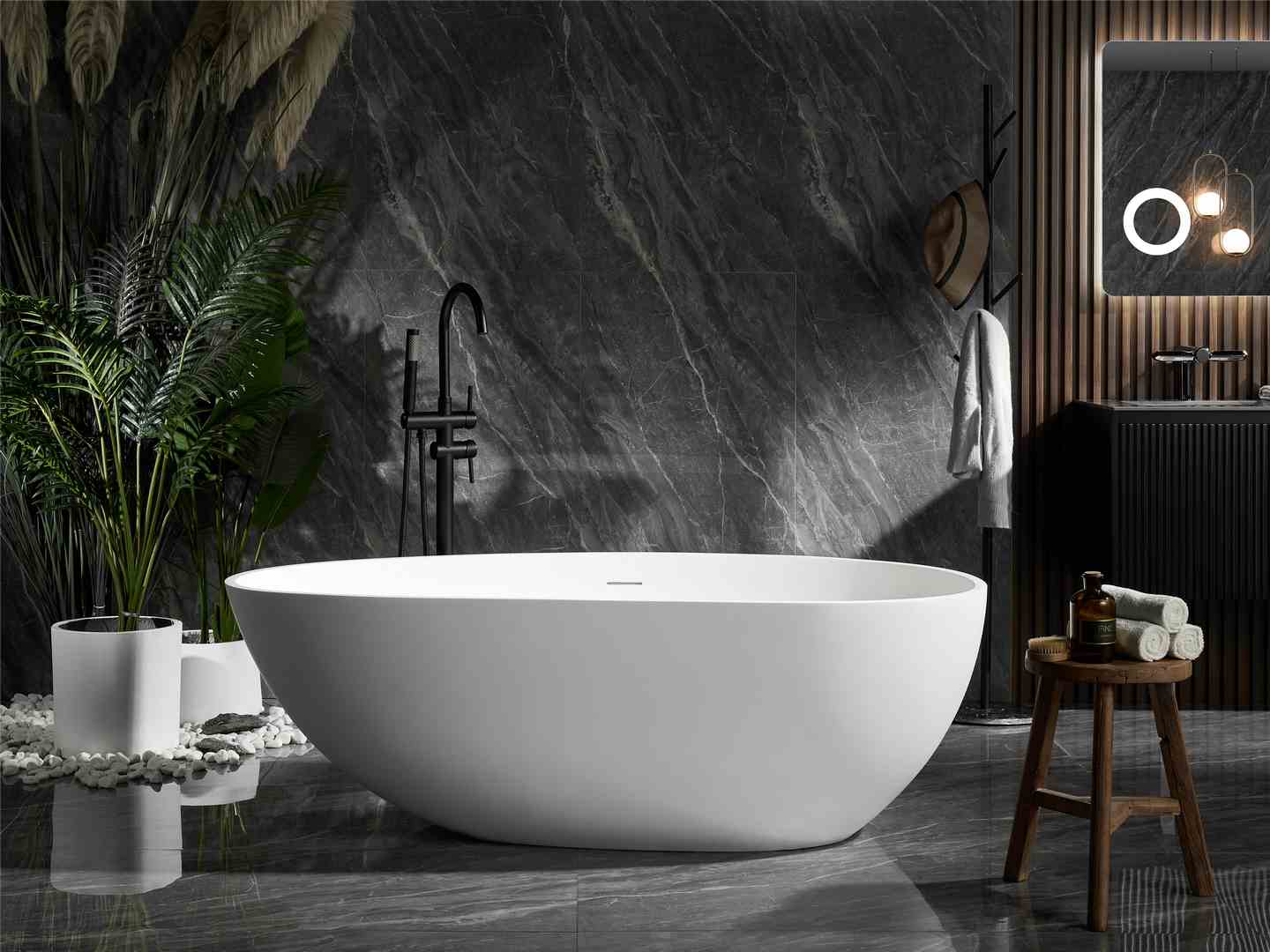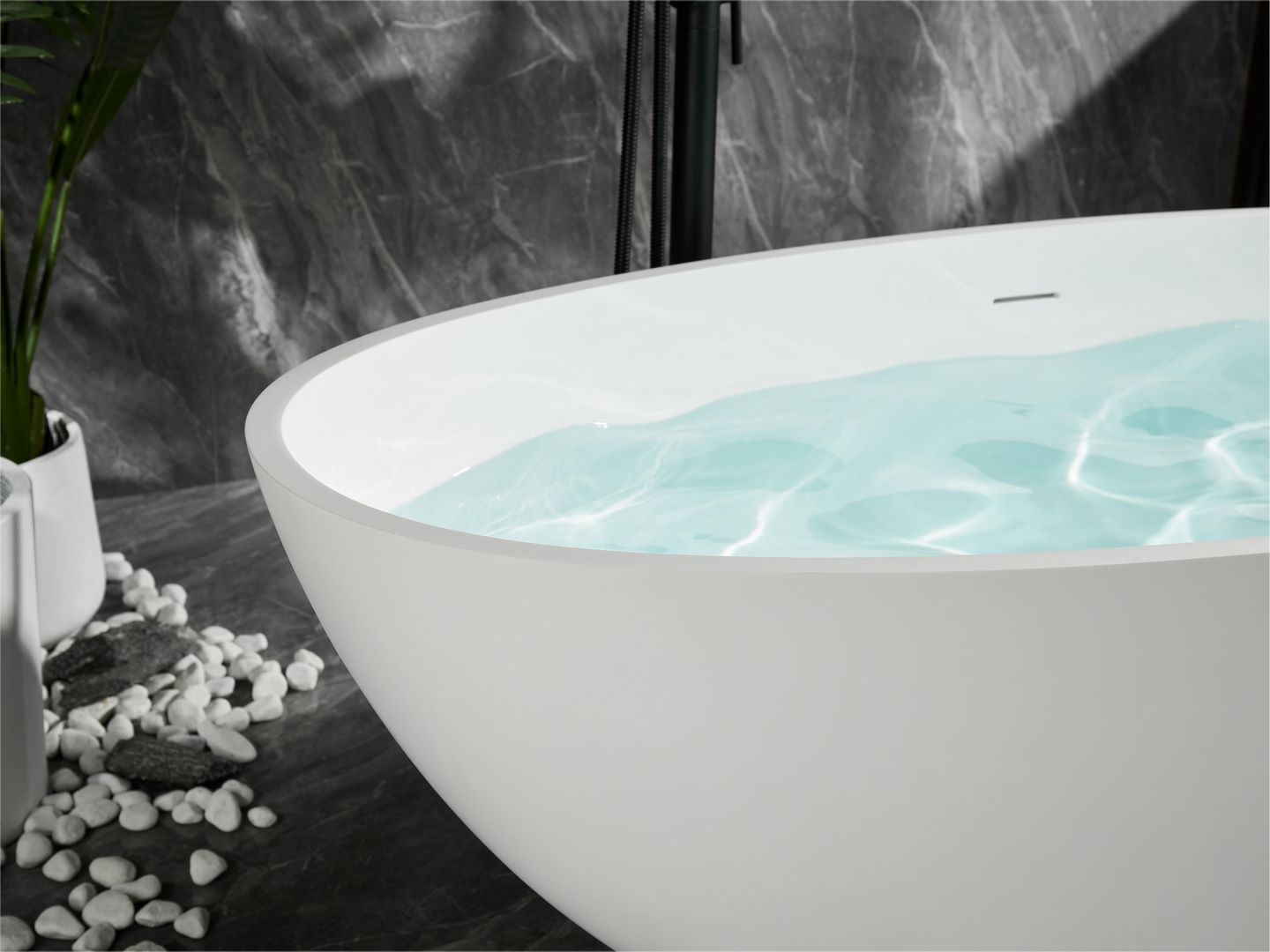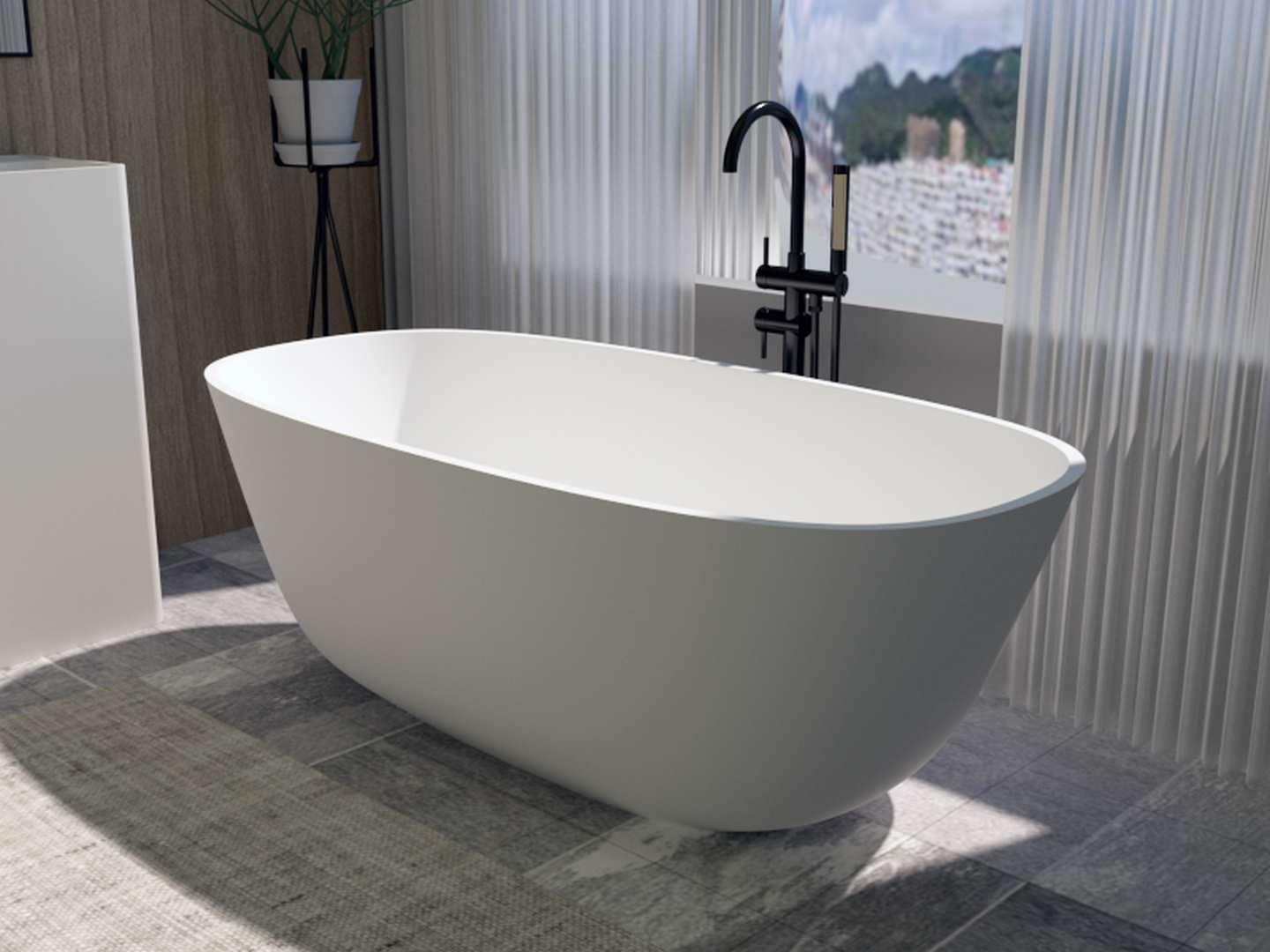5 Questions About Choosing an Acrylic Bathtub Manufacturer
Introduction
Acrylic bathtubs, renowned for their freestanding bathtub production sleek designs and durability, are a popular choice among homeowners and designers alike.
However, the array of options, information and facts about bathtubs can often seem bewildering. In this article, we promise to clarify the fog surrounding acrylic top bathtub manufacturers, providing you with a clear understanding of their market and offerings.
We will explore five pivotal questions that delve into the nature of acrylic bathtubs, their cost, quality variance, and how they stack up against other materials like fiberglass.
This comprehensive analysis aims to resolve common uncertainties and assist you in making an informed decision, ensuring that your bathroom embodies both style and function.

1.What is an Acrylic Bathtub?
An acrylic bathtub is fashioned from acrylic, a synthetic polymer renowned for its durability, lightness, and glossy sheen.
The manufacturing process involves heating a sheet of acrylic to a pliable state before molding it to the bathtub's shape.
This material stands out in the bathroom fixtures market due to its robustness against damage like cracking, chipping, and fading, ensuring long-term visual appeal and functionality.
Acrylic's glossy surface is not just about aesthetics; it also contributes to the bathtub's ease of maintenance and resistance to stains and scratches.
Its non-porous nature prevents water absorption, which aids in thwarting mold and mildew growth, enhancing the tub's hygienic attributes.
Acrylic bathtubs are celebrated for their excellent heat retention, keeping bath water warm for extended periods, thereby elevating the bathing experience.
The lightweight characteristic of acrylic simplifies the installation process, offering an advantage over heavier materials like cast iron.
This feature, combined with the material's formability, allows for a diverse range of bathtub designs and sizes, catering to various tastes and bathroom dimensions.
Consequently, acrylic bathtubs are not only practical in terms of installation and maintenance but also versatile, aligning with myriad bathroom aesthetics and user preferences.

2.Why Are Acrylic Bathtubs So Expensive?
Acrylic bathtubs command a higher price point in the market, primarily due to the complex manufacturing processes and the superior material qualities they offer.
The production of these bathtubs involves heating and molding acrylic sheets, a procedure that requires precise control and advanced technology to ensure the final product meets strict quality standards.
This complexity contributes to the higher cost of manufacturing.
The material used, acrylic, is lauded for its durability, strength, and ability to resist common damages like chipping and cracking.
These attributes make acrylic bathtubs a long-lasting investment, less prone to wear and tear compared to other materials.
The longevity and low maintenance needs of acrylic also add to its value, making it a cost-effective choice in the long run.
Furthermore, acrylic bathtubs often come in a wide array of designs and may include additional features such as whirlpool nozzles or special finishes, which can elevate the price.
The versatility in design allows for customization to suit individual preferences and bathroom styles, appealing to a broad customer base.
The combination of these factors—detailed manufacturing processes, durable material properties, design versatility, and added features—justifies the higher price tag of acrylic bathtubs.
Consumers often find the investment worthwhile, considering the aesthetic appeal, durability, and ease of maintenance that acrylic bathtubs offer.

3.Are Acrylic Baths Good Quality?
Acrylic bathtubs are generally regarded as high-quality fixtures, thanks to their material properties and functional benefits.
Acrylic's durability makes it less susceptible to common issues like cracking, chipping, and fading, ensuring the bathtub retains its aesthetic appeal and structural integrity over time.
The surface of an acrylic tub is smooth and non-porous, making it easy to clean and resistant to stains and mildew, which contributes to a hygienic bathroom environment.
Design flexibility is another significant advantage of acrylic bathtubs.
They are available in a wide range of shapes, sizes, and styles, providing homeowners the ability to choose a bathtub that perfectly fits their bathroom's layout and decor.
This versatility is coupled with the material’s excellent heat retention properties, which keep bathwater warm for longer periods, enhancing the bathing experience.
Furthermore, acrylic's lightweight nature makes these bathtubs easier to transport and install, reducing the overall cost and complexity of bathroom renovation projects.
In case of minor scratches or damage, the surface of an acrylic bathtub can often be repaired with polishing techniques or restoration kits, extending its lifespan and maintaining its appearance.
To ensure the acquisition of a high-quality acrylic bathtub, it is advisable to purchase from reputable brands and manufacturers known for their commitment to quality and durability.
Investing in a well-crafted acrylic bathtub can provide long-lasting satisfaction and functionality in a home's bathroom.

4.Are All Acrylic Baths the Same?
Acrylic bathtubs exhibit considerable variability in quality and construction, dispelling the notion that all acrylic baths are identical.
The differences stem from factors like the quality of acrylic used, the manufacturing process, the design, and the construction methods.
The density and robustness of high-quality acrylic make it superior in terms of scratch resistance, colorfastness, and resistance to chemical damage.
In contrast, less expensive acrylic options might be thinner and less durable, which can impact their longevity and performance.
The reinforcement of acrylic bathtubs, commonly with materials like fiberglass or resin, also plays a crucial role in enhancing their strength and durability.
However, the quality and quantity of this reinforcement can vary, affecting the tub's overall stability and life span.
Moreover, the thickness of the acrylic shell is a critical factor in determining the bathtub's durability and insulation properties.
Thicker acrylic shells are generally more durable and provide better insulation, keeping bath water warm for longer periods.
Acrylic bathtubs are also available in various surface finishes, such as glossy, matte, or textured.
These finishes not only influence the tub’s aesthetic appeal but also its maintenance needs and resistance to stains and scratches.
Therefore, when considering an acrylic bathtub, it is essential to evaluate these factors to determine the quality and suitability of the tub for one’s specific needs and preferences.

5.Acrylic vs. Fiberglass Tubs: Which is Better?
The choice between acrylic and fiberglass tubs hinges on factors like durability, aesthetics, maintenance, and budget.
Acrylic bathtubs are generally more durable than their fiberglass counterparts. They boast a higher resistance to common issues like cracking, chipping, and fading.
The non-porous nature of acrylic makes these tubs easier to clean and maintain, as they resist staining and are less likely to fade over time.
Acrylic also excels in retaining heat, which means that bath water stays warmer for longer periods.
This not only enhances the bathing experience but also contributes to energy efficiency by reducing the need for additional hot water.
On the other hand, fiberglass bathtubs are often more budget-friendly than acrylic ones.
They provide a cost-effective solution for those looking to minimize upfront expenses.
However, it's important to note that fiberglass may not match the longevity and robustness of acrylic, potentially leading to higher costs over time due to wear and tear or the need for replacement.
In summary, while acrylic bathtubs offer superior durability, better heat retention, and easier maintenance, fiberglass bathtubs stand out as a more economical option.
The best choice depends on the individual's priorities, whether they value long-term quality and performance or are seeking a more affordable short-term solution.

Conclusion
In exploring five pertinent questions about acrylic bathtub manufacturers, our article offered valuable insights for those contemplating their choices in this market.
The durability and quality aspects of acrylic bathtubs emerged as primary concerns, driving a higher purchase rate due to the material’s long-term value and ease of maintenance.
Questions about the cost effectiveness and design versatility of acrylic bathtubs also highlighted consumer interest in finding a balance between aesthetics and affordability.
The comparison between acrylic and fiberglass tubs stood out as an unusual yet crucial consideration, revealing consumer preferences for material quality over initial cost savings.
These findings underscore the importance of informed decision-making in selecting acrylic bathtubs, guiding consumers toward options that best suit their needs and expectations.
Welcome to know more detailed information about products in Cpingao:
